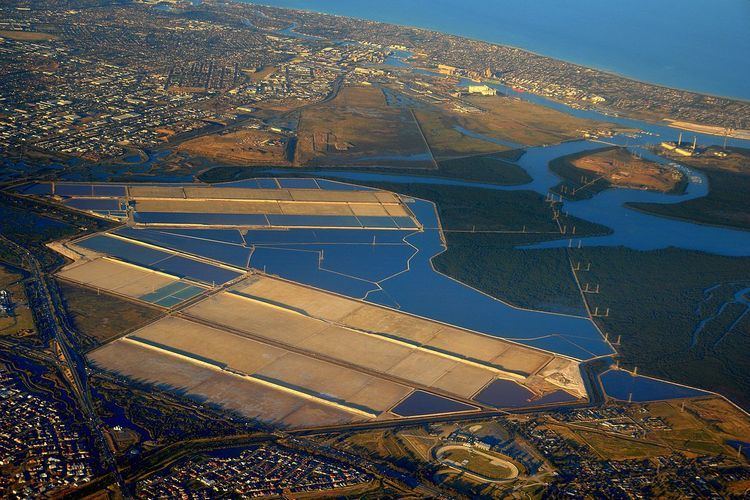Address Dublin SA 5501, Australia | Established October 27, 2016 | |
 | ||
Managing authorities Website Adelaide International Bird Sanctuary National Park—Winaityinaityi Pangkara Profiles | ||
The Adelaide International Bird Sanctuary National Park—Winaityinaityi Pangkara is a protected area in South Australia established by the South Australian government on the northeast coast of Gulf St Vincent, between Port Parham in the north and the southern end of Barker Inlet in the south, for the purpose of rehabilitating land used as salt pans, protecting habitat for international migratory shorebirds, managing water quality in adjoining parts of Gulf St Vincent, creation of ‘green’ space, development of niche tourism and creation of opportunities for indigenous people.
Contents
This very low-gradient, low-energy coastline, containing a broad lateral extent of subtidal seagrass meadows, intertidal mangroves and supratidal saltmarshes and salinas, extends from the Adelaide metropolitan area as far as the head of Gulf St Vincent, and is also known as the "Samphire Coast". The coastline north of Port Parham, outside the proposed sanctuary, also has a high degree of protection through being in the Port Wakefield Proof and Experimental Establishment, and the Clinton Conservation Park.
Key objectivesEdit
The Adelaide International Bird Sanctuary is a protected area established by the SA government for the northeast coast of Gulf St Vincent extending from Adelaide to its immediate north with the view of achieving the five key outcomes:
A driver for the proposal is the need to rehabilitate land previously used at Dry Creek, St Kilda and other localities as salt pans and managing the environmental risks arising from the cessation of salt evaporation process of salt extract such as exposing of acid sulphate soils.
ExtentEdit
The Adelaide International Bird Sanctuary extends from Barker Inlet in the south to Port Parham in the north over a distance of 60 kilometres (37 mi). Its extent overlaps and adjoins existing protected areas such as the Port Gawler and Torrens Island conservation parks, the Upper Gulf St Vincent Marine Park, the Barker Inlet-St Kilda Aquatic Reserve, the St Kilda – Chapman Creek Aquatic Reserve and the Adelaide Dolphin Sanctuary. The sanctuary will also include 228 hectares (560 acres) of land that adjoins the Port Gawler Conservation Park and Buckland Park lake, which was purchased in 2013 by the SA government with financial contributions from the following non-for-profit organisations - Nature Foundation SA and Birds SA. It is stated in 2014 that the sanctuary will be proclaimed as a conservation park under the National Parks and Wildlife Act 1972, in order to ‘provide one of the highest levels of protection allowed for by state legislation’.
TimelineEdit
The SA government committed to the proposal at the state election held in March 2014. The 2014-15 State Budget included expenditure of A$0.3 million for the purpose of commencing work. A formal announcement about the proposal was made by Ian Hunter, the Minister for Sustainability, Environment and Conservation on 20 August 2014, including the purchase of 2,300 hectares (5,700 acres) of land formerly held by salt operators, but undeveloped, for the sum of A$2 million. The SA Government has also committed to an expenditure of A$1.7 million over a period of four years for the sanctuary’s establishment and its ongoing maintenance, with a likely completion in 2018.
It was proclaimed as a national park under the National Parks and Wildlife Act 1972 on 27 October 2016 with the name Adelaide International Bird Sanctuary National Park—Winaityinaityi Pangkara with Winaityinaityi Pangkara being the national park's name in the language of the Kaurna, the Indigenous Australians whose traditional lands include the Adelaide metropolitan area and the extent of the national park.
